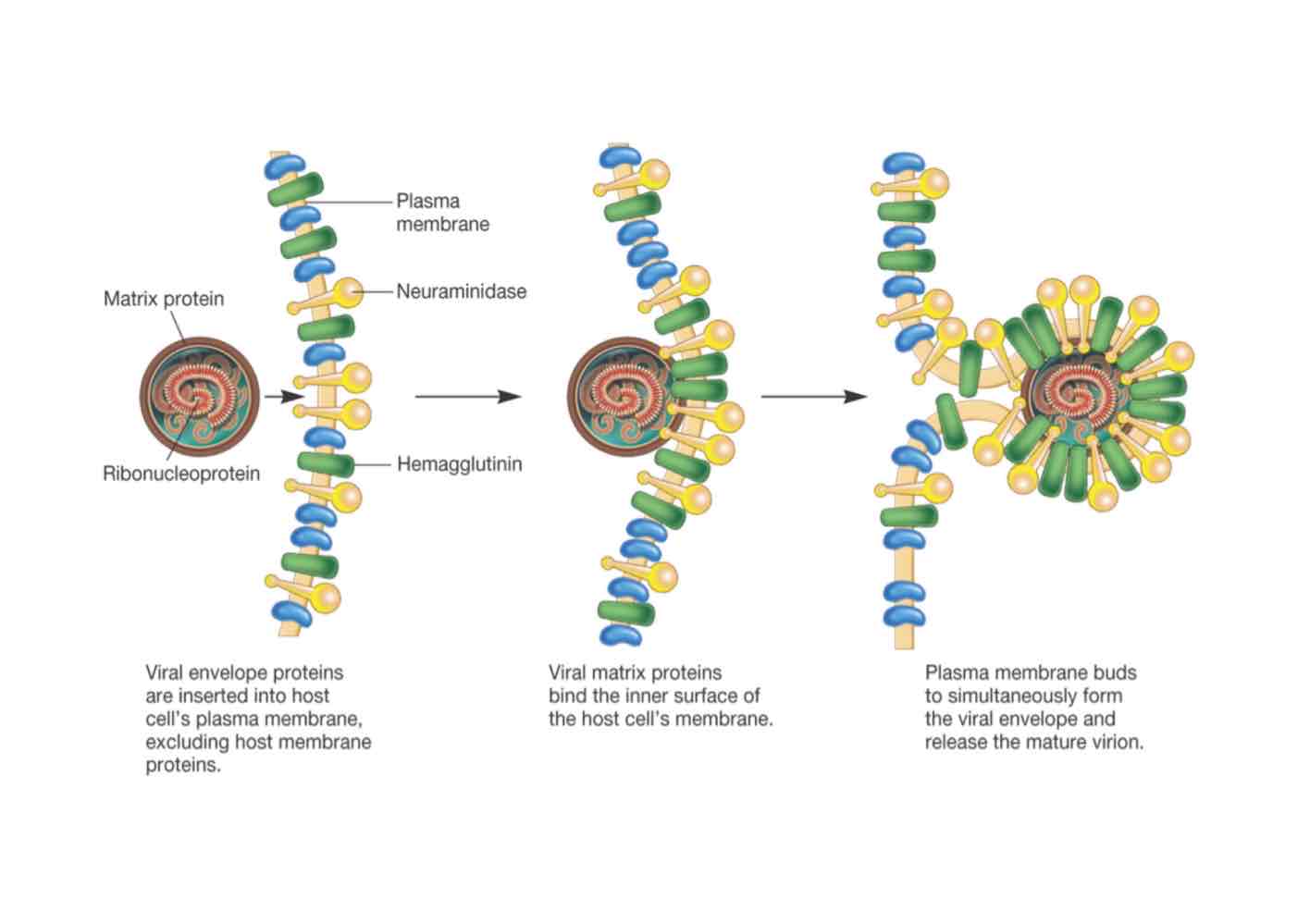MBIO 1010 / Topic 2f: Viruses
1/32
There's no tags or description
Looks like no tags are added yet.
Name | Mastery | Learn | Test | Matching | Spaced |
|---|
No study sessions yet.
33 Terms
What are the two parts, at minimum, of a virus? Two-in-one, what do they make?
The nucleic acid genome, which can either be DNA or RNA, and a protein coat surrounding the genome, with the latter also called a capsid. Together, they make up the nucleocapsid.
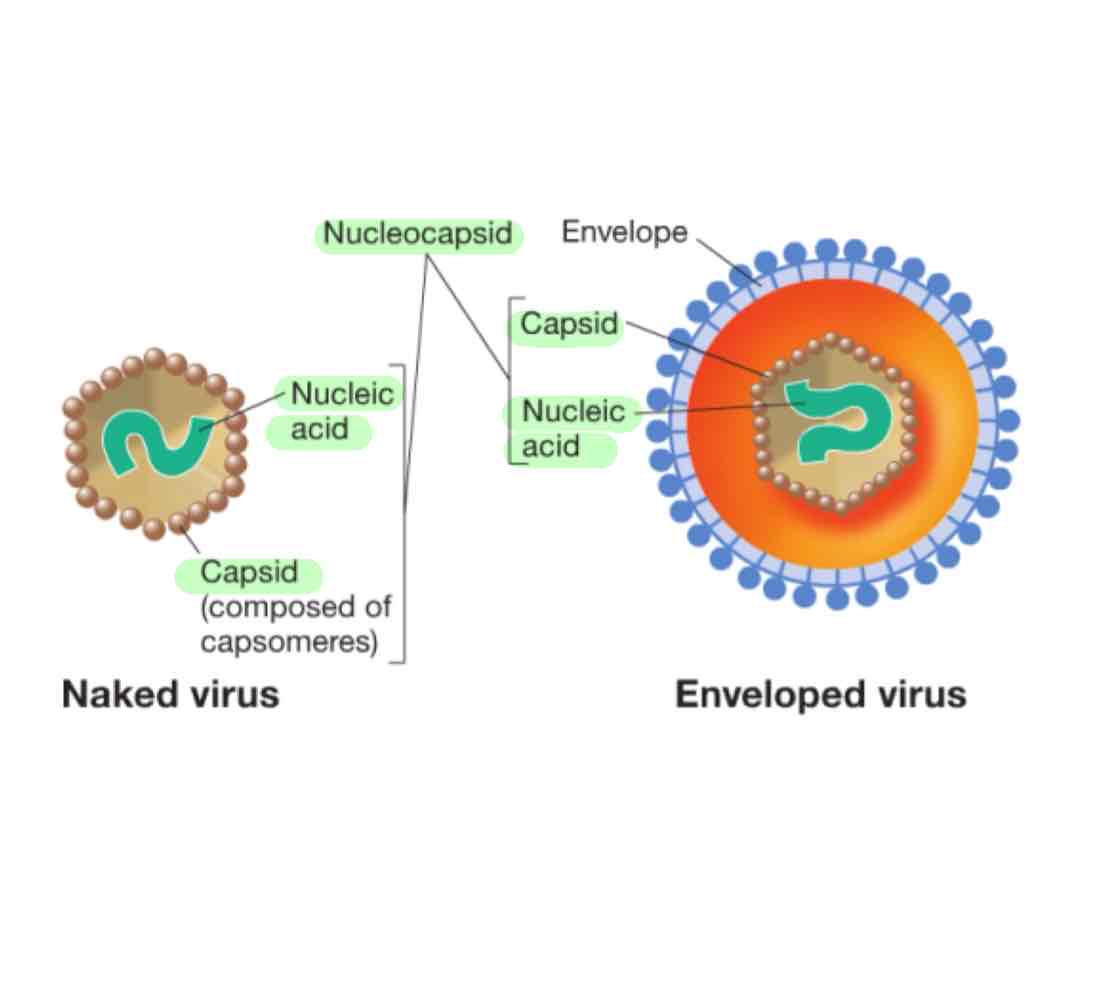
What is a viral envelope? Does it show in all viruses?
Layer of lipid surrounding the nucleocapsid, showing in merely some viruses.
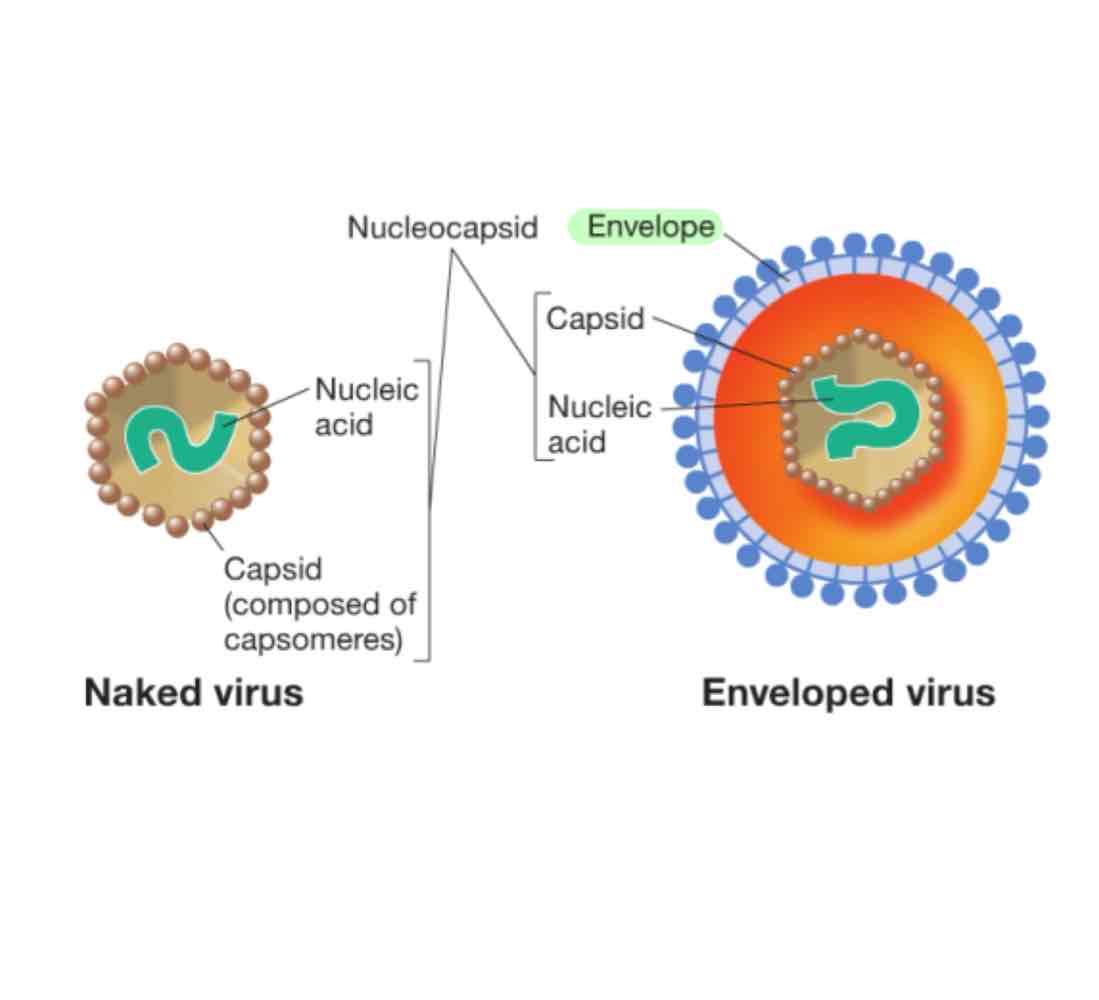
Viral genomes can either be ___ or ___, which itself can either be ___ or ___, which itself can either be _______ or _____, which itself can be _______ or ___ _______.
Viral genomes can either be DNA or RNA, which itself can either be ss or ds, which itself can either be circular or linear, which itself can be segmented or not segmented.

Viral genomes can be in the form of RNA, but the moment they get into they cell, they can use RNA to produce… what?
They can finally use RNA to produce DNA.
Not a hard and fast rule, but, usually, what does 1 gene equal to in base pairs (bp) and kilobase pairs (kbp)?
1 gene = 1,000 bp = 1kbp.
What is the smallest viral genome size? How about the largest?
The smallest is approximately 3.6 kbp for some ssRNA viruses.
The largest is greater than 150 kbp for some dsDNA viruses.
What transfer does the capsid allow? What is the capsid made of? What are the three types of capsids?
The capsid allows the the transfer of the viral genome between host cells. Made of protomers, which are identical polypeptides, there are three types of capsids:
Helical capsids.
Icosahedral capsids.
Binal capsids.
What does a helical capsid look like?
A spiral cylinder with the nucleic acid genome coiled inside.
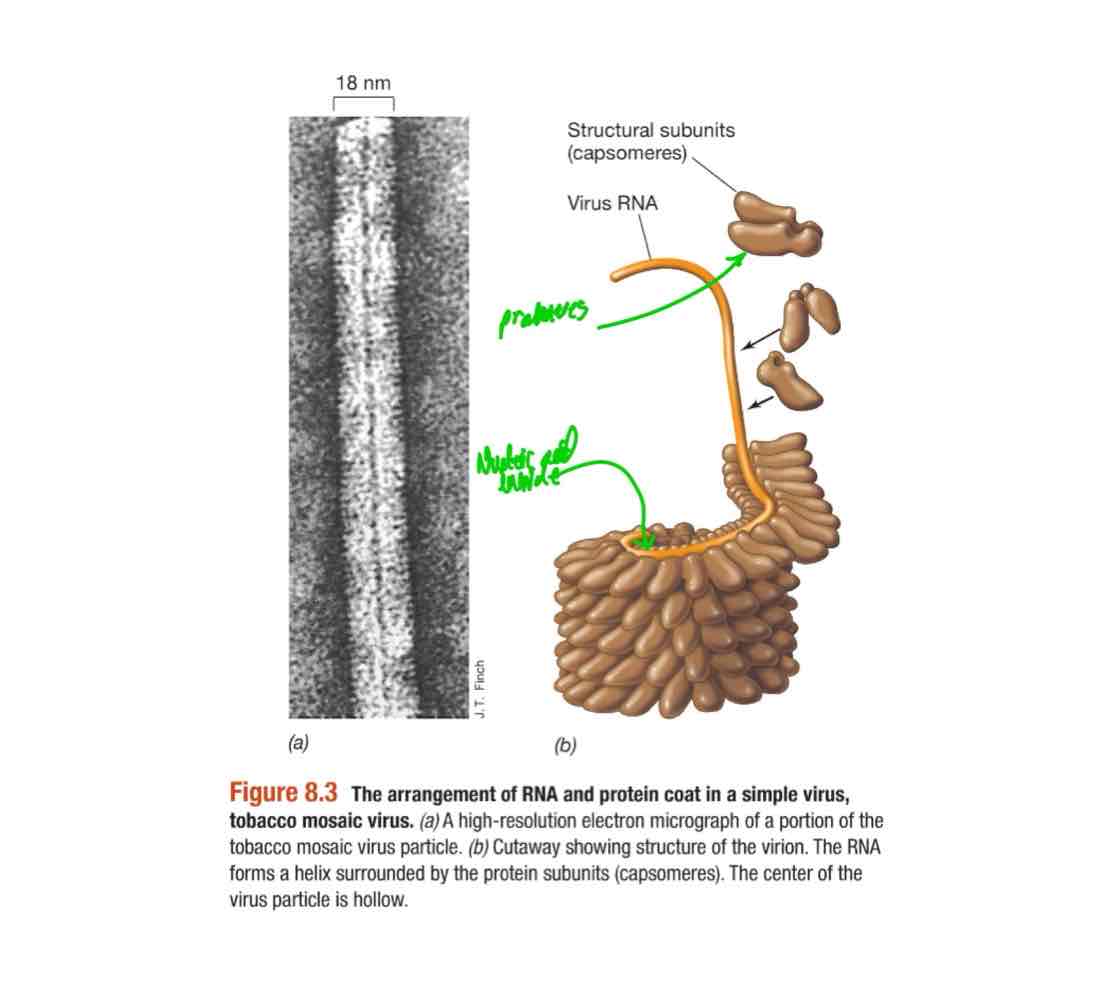
What does an icosahedral capsid look like?
An ordered geometric shape with triangular faces, exhibiting many forms of symmetry. The protomers cluster to form capsomeres, which are a group of protomers.
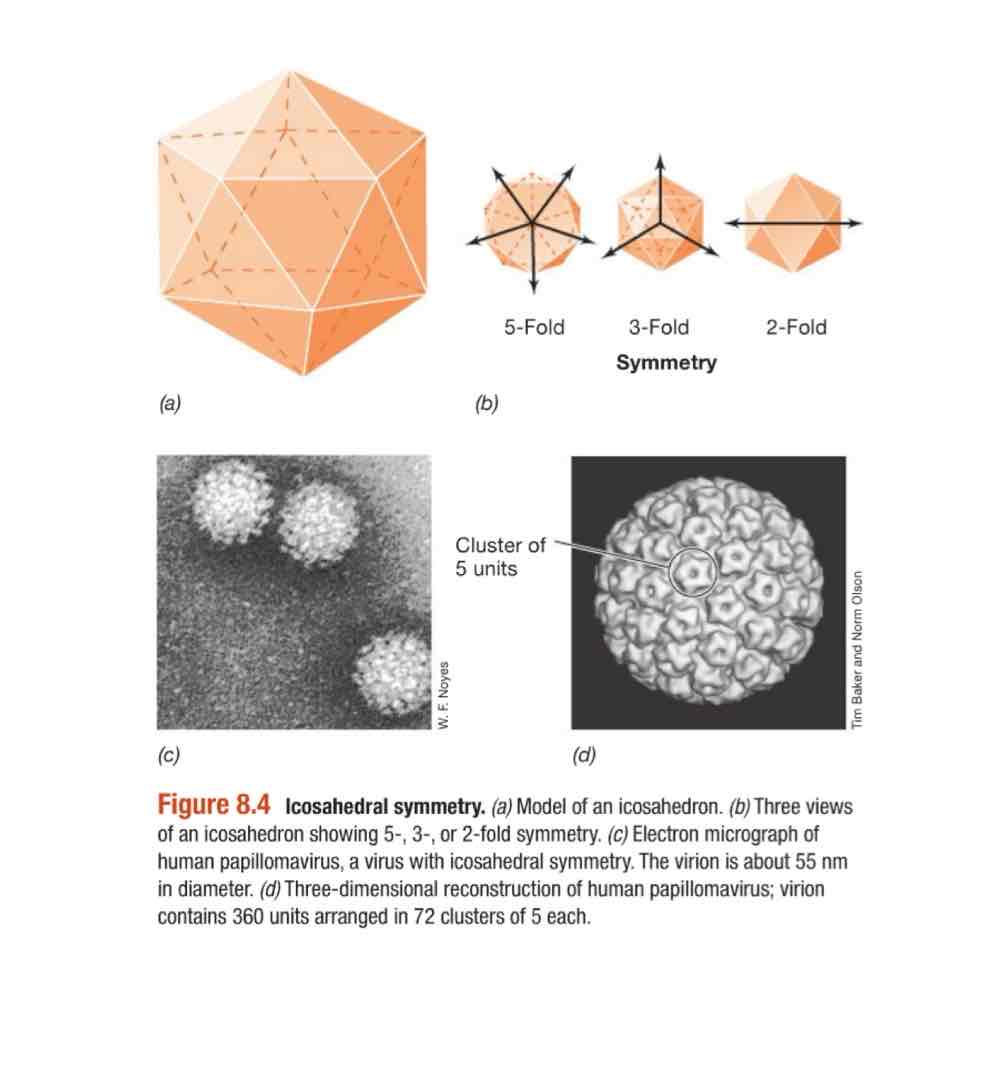
What do binal capsids look like?
A geometric head with an attached helical tail, with the genome being carried in the many-faced geometric head and the tail as the “syringe” to inject DNA into host cell.
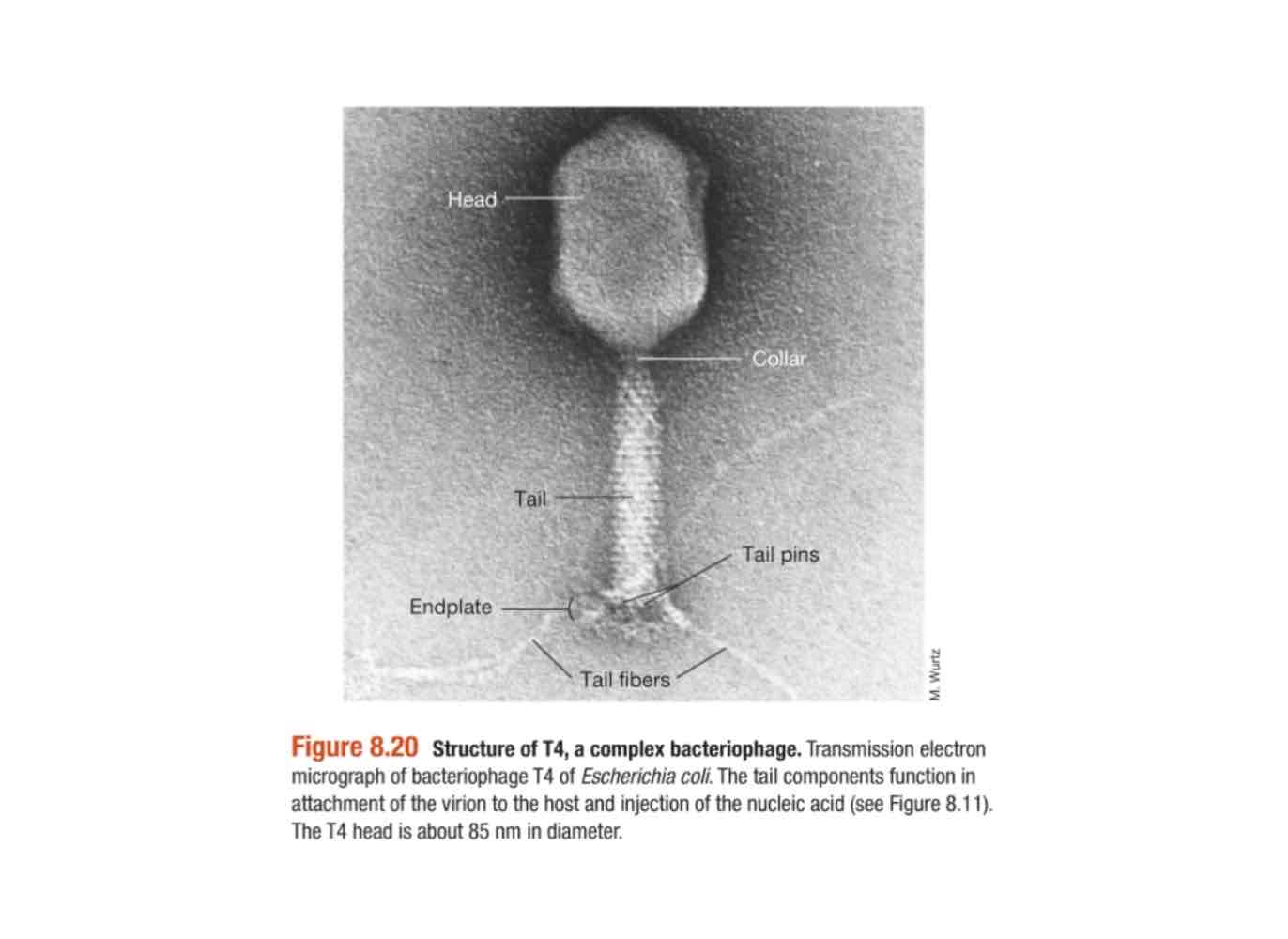
What are nucleocytoplasmic large DNA viruses? What could it tell in regard to the evolution of viruses?
Viruses with complex multi-layered structure. These viruses could be telling us about the evolution of viruses, possibly in a sense that viruses were once cellular organisms that lost inessential genes because it needed them less due to host hijacking, trimming down their genomes.
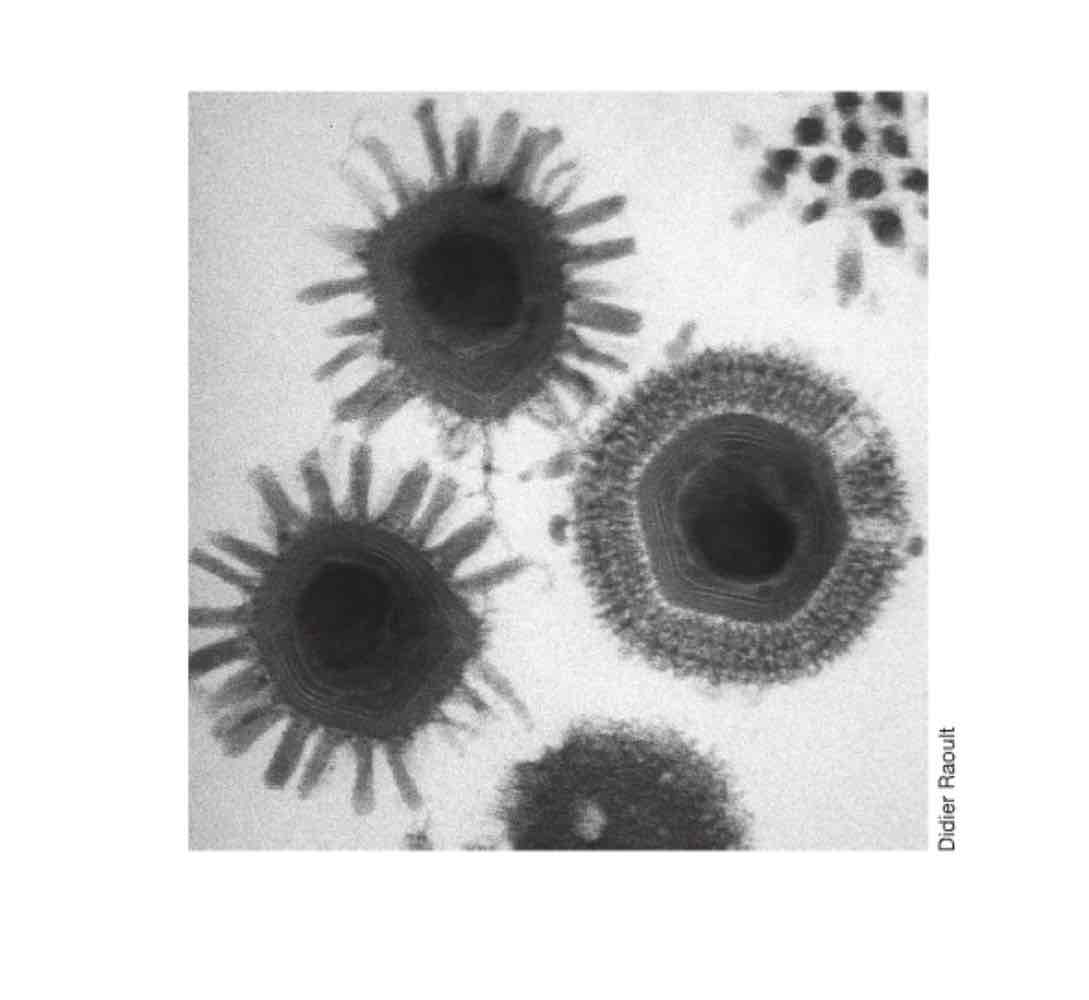
For a naked virus, what is the shape dictated by? For an enveloped virus, what is the shape dictated by?
For a naked virus, the virus is dictated by the capsid. For an enveloped virus, the virus is dictated by the envelope.
What is the envelope made of? Where does it come from? What is an advantage of an evelope?
An envelope is viral proteins and a lipid bilayer that was stolen from the last host cell it infected and exited. It then acts as a disguise by looking like the last cell it infected.
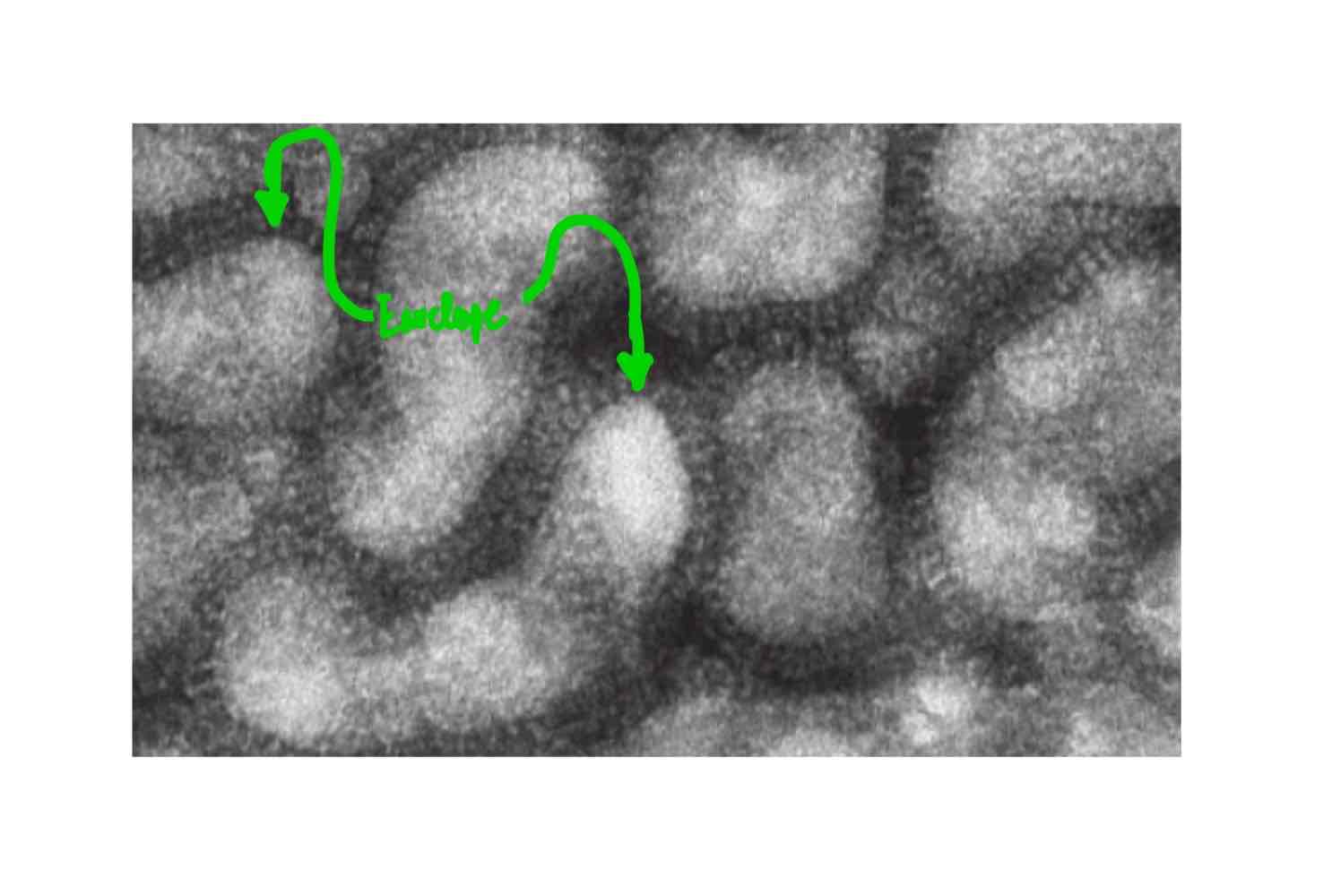
What is another word for the viral proteins on the envelope? What are the two major types of viral proteins? What does each viral protein allow?
The two major types of spikes are hemagglutinin (H) and neuraminidase (N). Neuraminidase allows exit from previous host. Hemagglutinin allows adsorption to next host.
What domains of life do viruses infect? How many viruses does one cellular organism have? Generally, how many cellular organisms can one virus infect?
Viruses infect all domains of life.
The current belief is that every cellular organism on this planet has at least 10 different viruses that infect it.
Most viruses can only infect one host species.
What do bacteriophages infect? Give an example of a bacteriophage and what it infects.
Viruses infecting bacteria, e.g. T4 that infects E. coli.
What do animal viruses infect? Give an example of an animal virus and what it infects.
Viruses infecting animal cells, e.g. Human papillomavirus that infects human epithelial cells.
Why are most viruses specific to a single host species?
Viruses must attach to specific, correct receptors on the host cell surface.
Give an example of how viruses are specific to specific receptors using a virus and a receptor.
HIV can only bind to CD4, a receptor on the surface of some human immune system cells. Extremely specific and selective.
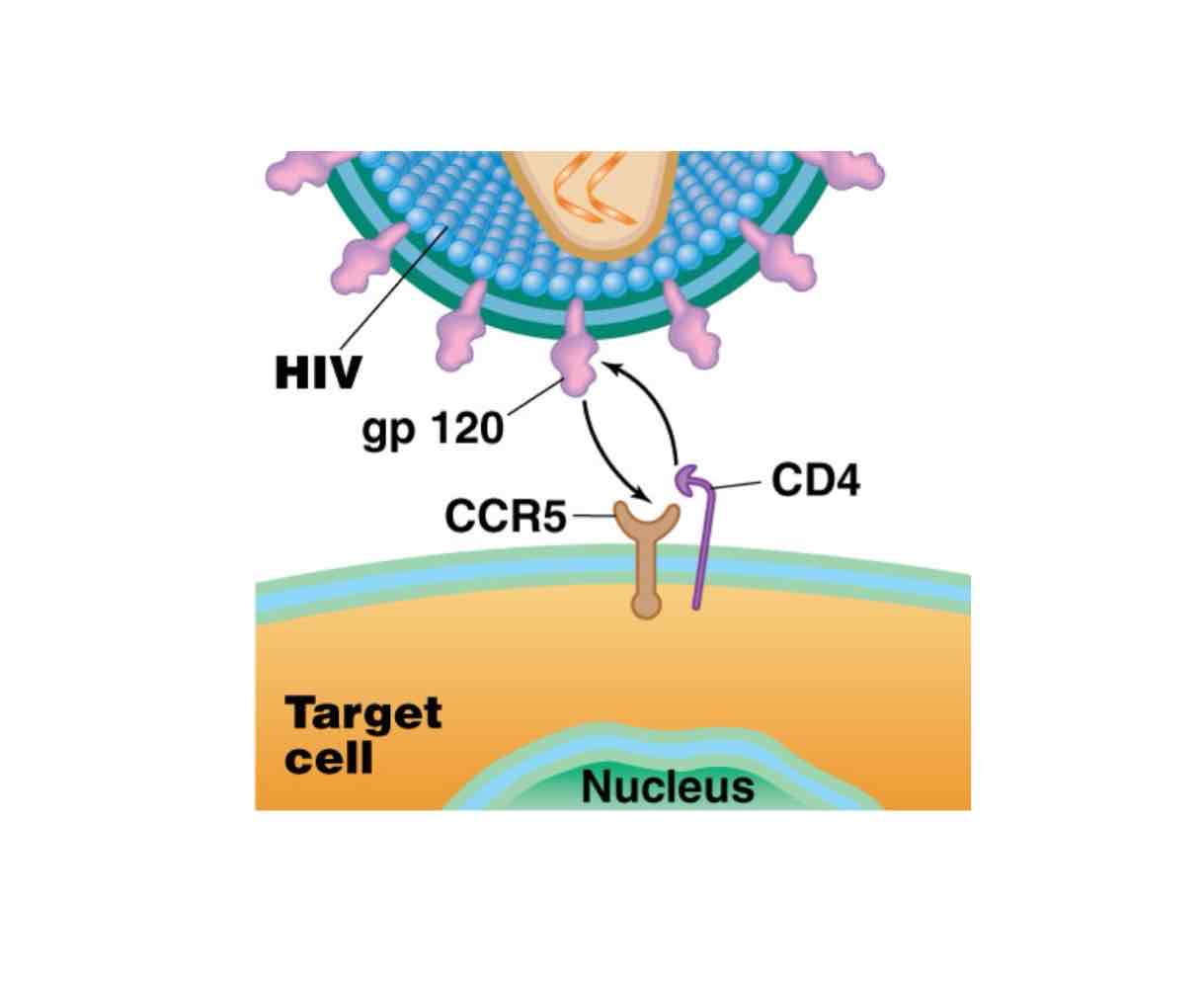
It is only most viruses that infect more than one species. There are some viruses infecting more than one species. Give an example of a virus that can infect more than one species, and how it does so.
The influenza virus attaches to a glycoprotein found on the surface several animal cells, infecting humans, pigs, chickens, seals, et cetera.
What are the five stages of the typical virus life cycle?
Adsorption.
Penetration and uncoating.
Synthesis of viral nucleic acids and protein.
Assembly of new virions.
Release of new virions.
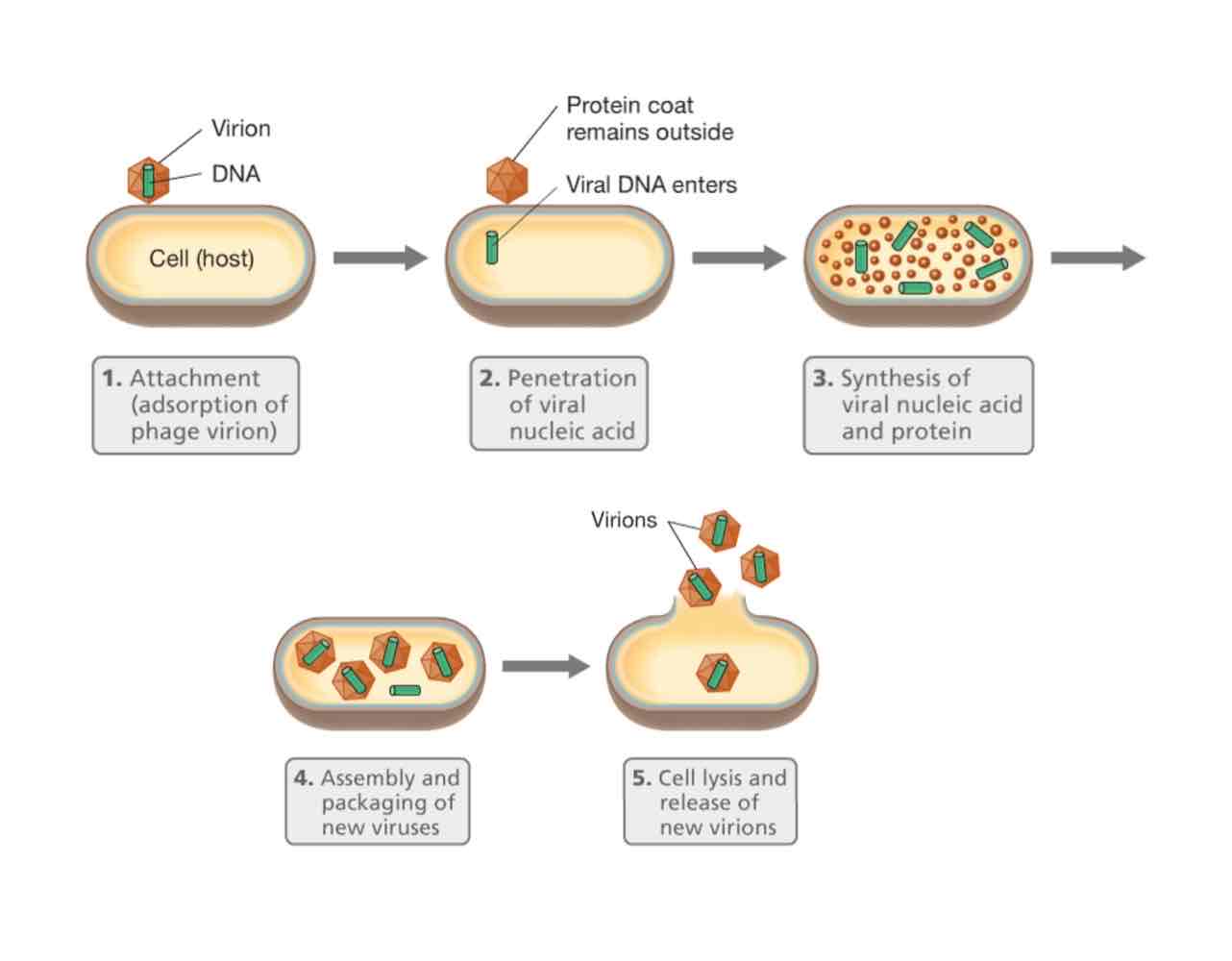
In what two ways does animal viral entry occur, and what specific viruses does each?
Entry is either by fusion with the CM, done by some enveloped viruses, or endocytosis, done by most naked viruses and a lot of enveloped viruses.
How does the entry of animal viruses work via fusion?
Spikes attach to receptors. Viral lipids and host lipid layers fuse, as they are the same lipids. This deposits nucleocapsid into cell.
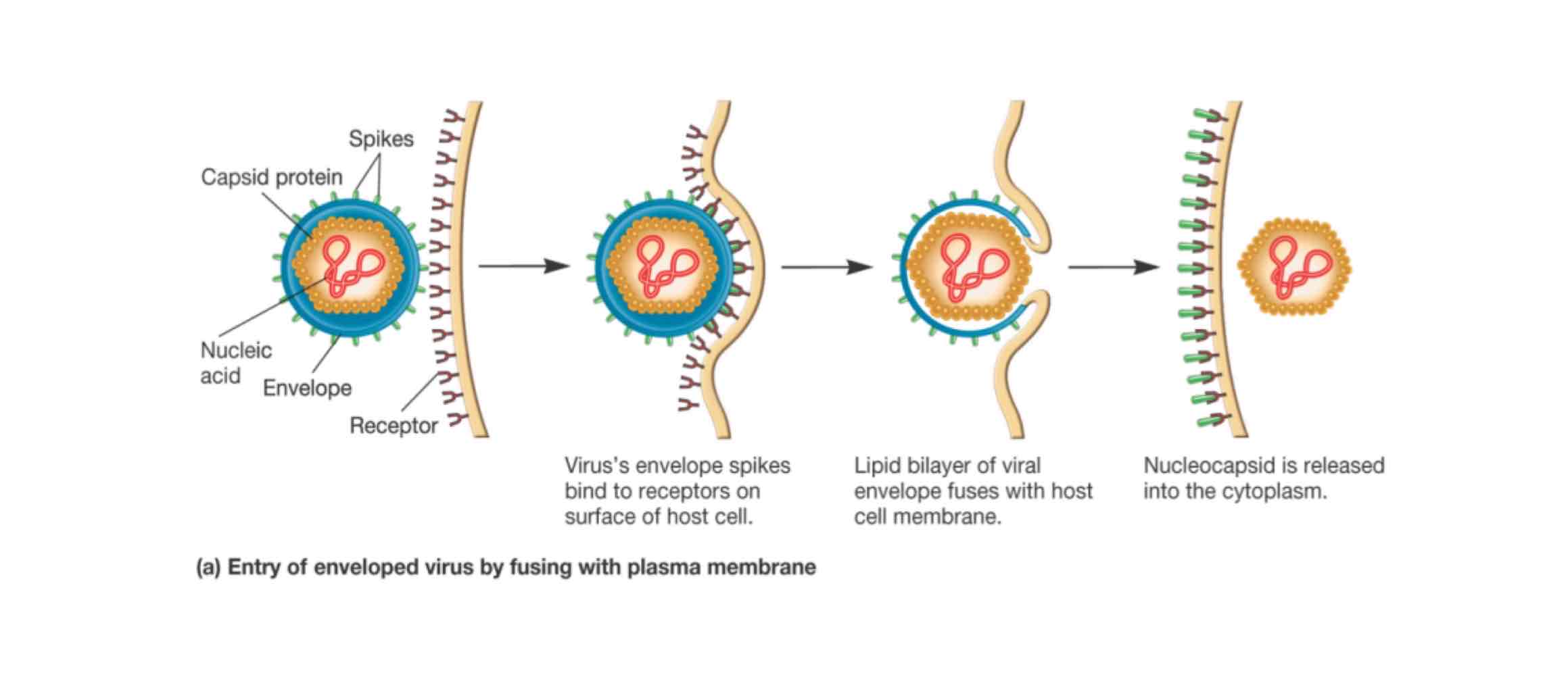
How does the entry of animal viruses work via endocytosis?
Spikes attach to endocytosis-mediating receptors. Endocytosis is triggered, and virus enters the cell with an endosome. For enveloped viruses, nucleocapsid escapes from the endosome. For naked viruses, nucleic acid is injected out of the endosome, leaving the ghost.
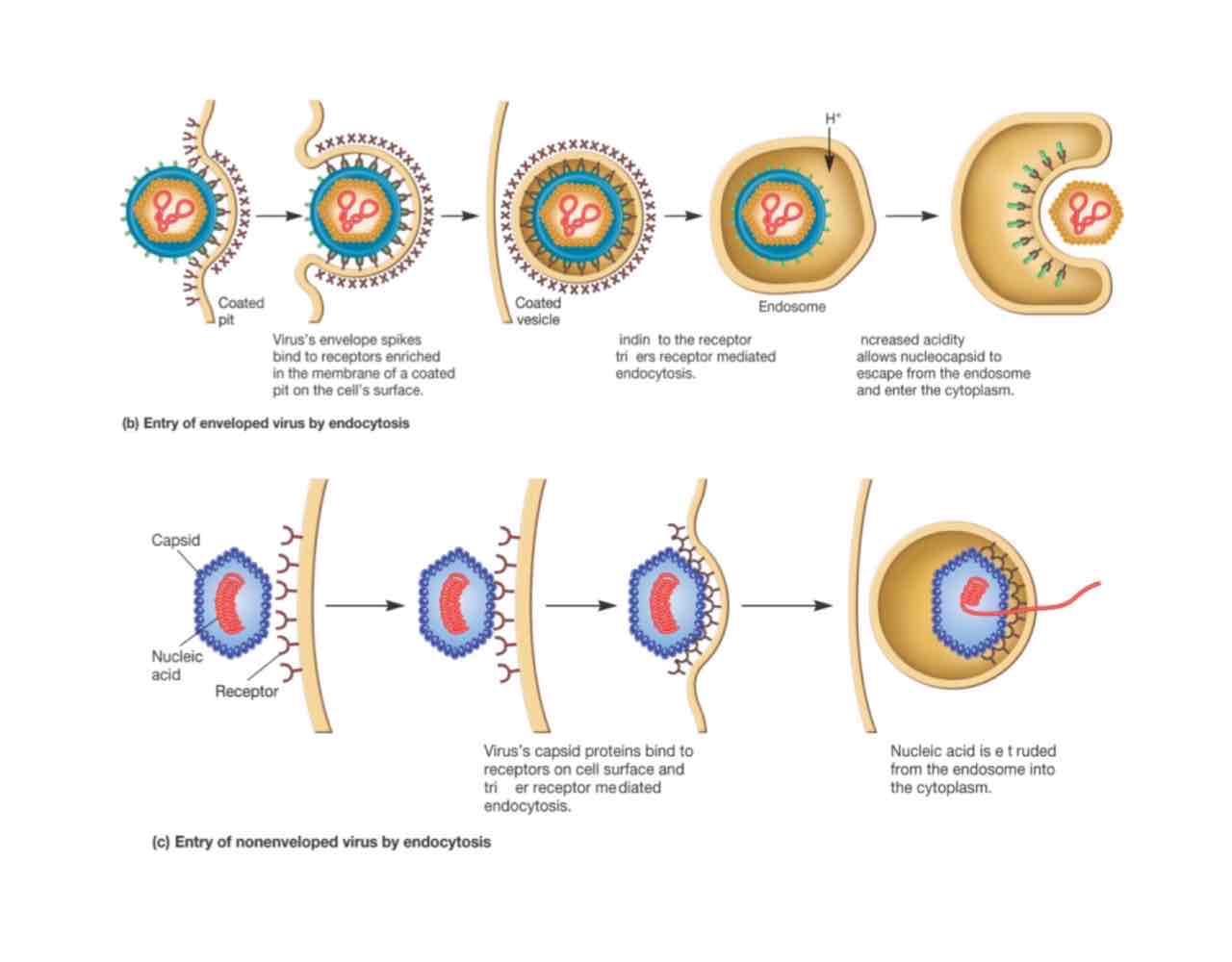
In either fusion or endocytosis, what are the two things that always happen?
The capsid is removed and only the viral genome is released into the cell.
What happens during adsorption? How about penetration and uncoating?
Adsorption is wherein virus attaches to host cell via receptors.
Penetration and uncoating, wherein virus enters the host cell. Nucleic acid is required to penetrate, not the whole virus, leaving the capsid behind.
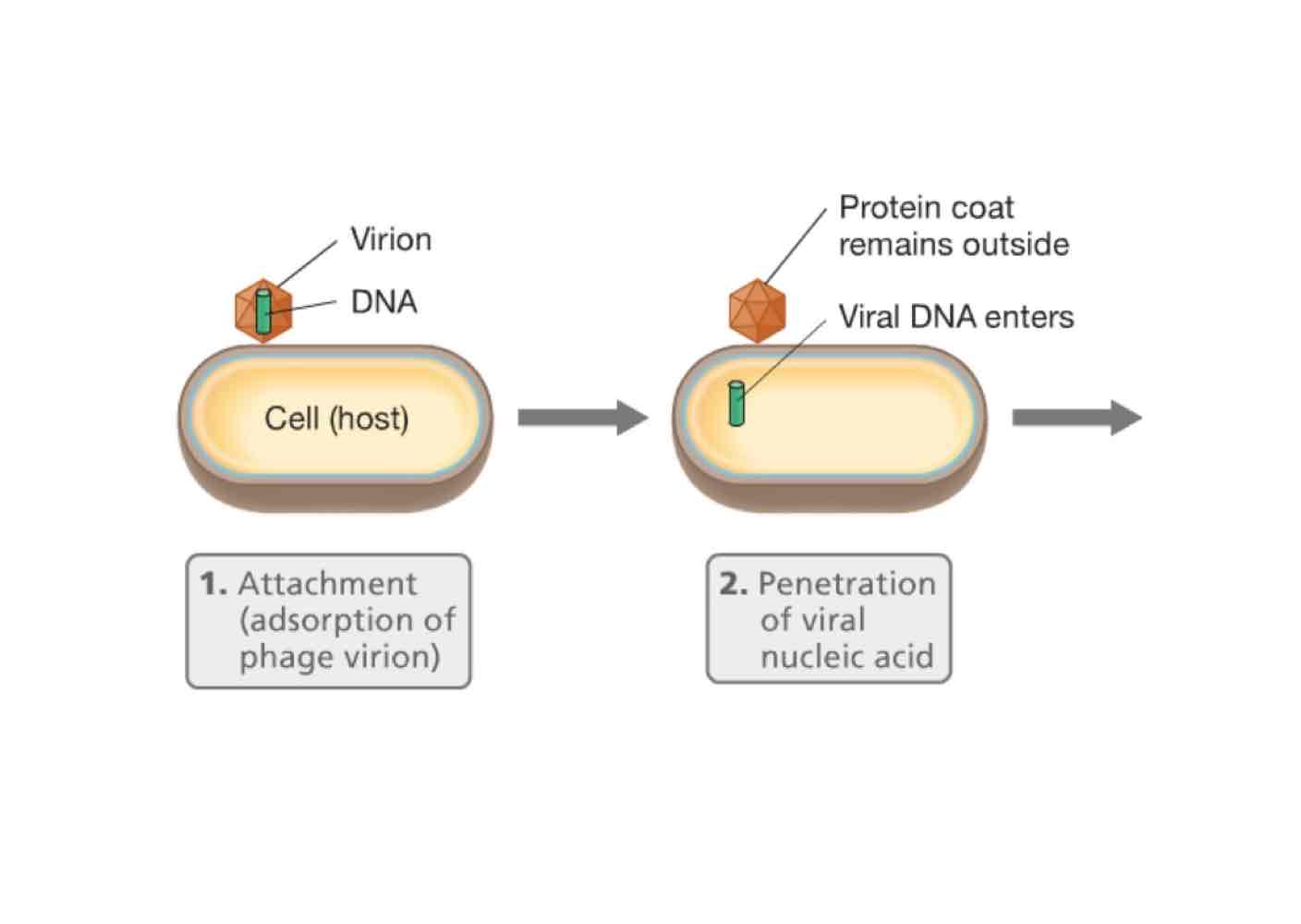
What happens during the synthesis of viral nucleic acids and viral proteins?
Viral genes are expressed and viral proteins are synthesized by the host’s own ribosomes. Viral genome is also replicated by the host’s replication machinery.
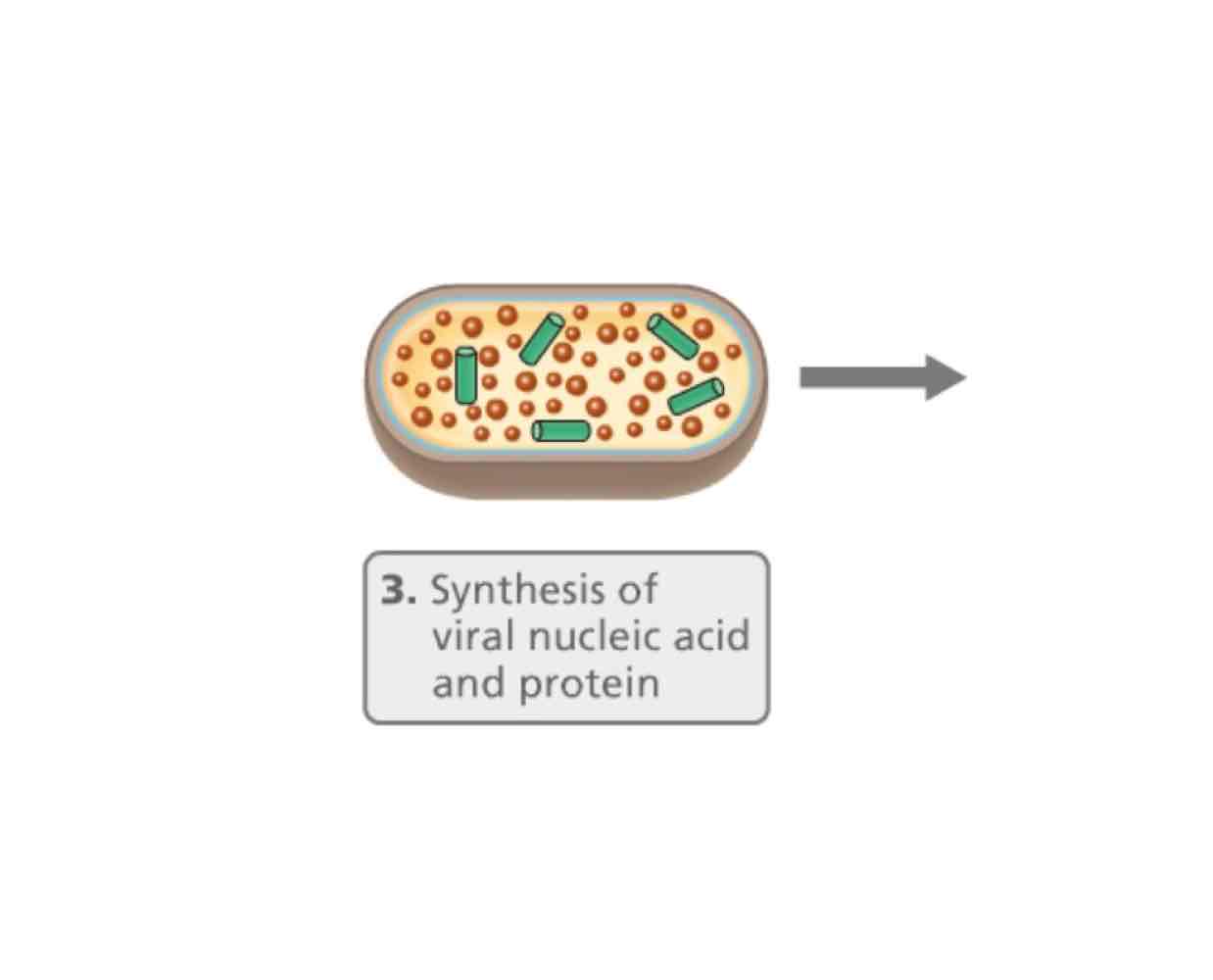
How much cell machinery do DNA viruses hijack? How about RNA viruses?
DNA viruses tend to hijack virtually all machinery - replication, transcription, protein synthesis machineries. RNA viruses sometimes need to bring a little bit of their own machinery in, but they still hijack as much as they can.
What happens during the assembly of new virions?
Viral proteins assembled into capsids, and then genomes are packaged into nucleocapsids.
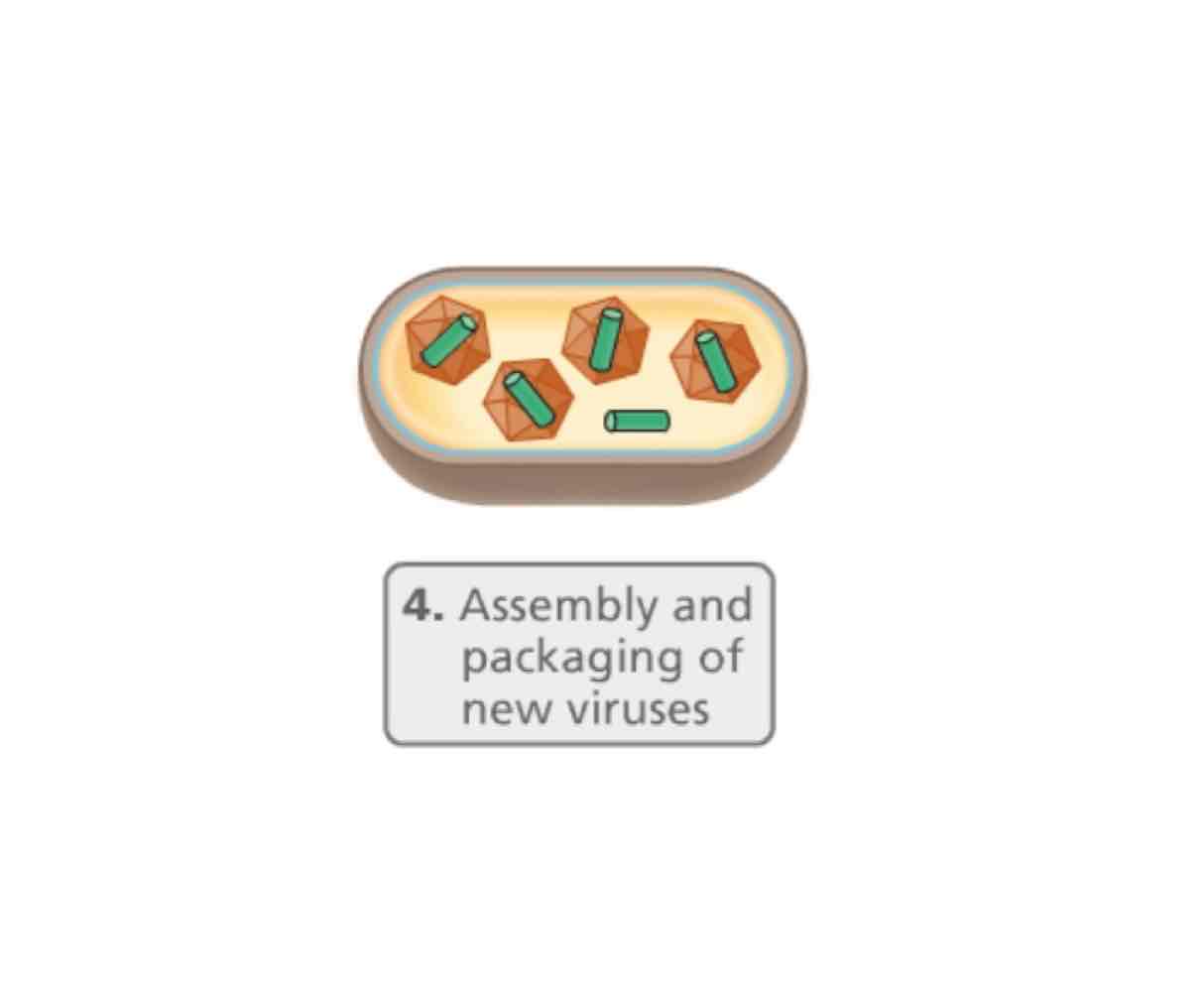
Viruses do not reproduce by ______. Viruses are reproduced by ________.
Viruses do not reproduce by division. Viruses are reproduced by assembly.
What are the two types of viral infections based on the release of new virions? Explain how each occurs.
Lysis infection: Naked viruses usually accumulate, eventually lysing the host cell to release progeny.
Persistent infection: Enveloped viruses bud through CM without killing the host one-by-one, and the cell can stay alive for a long time as persistent source of new viruses.
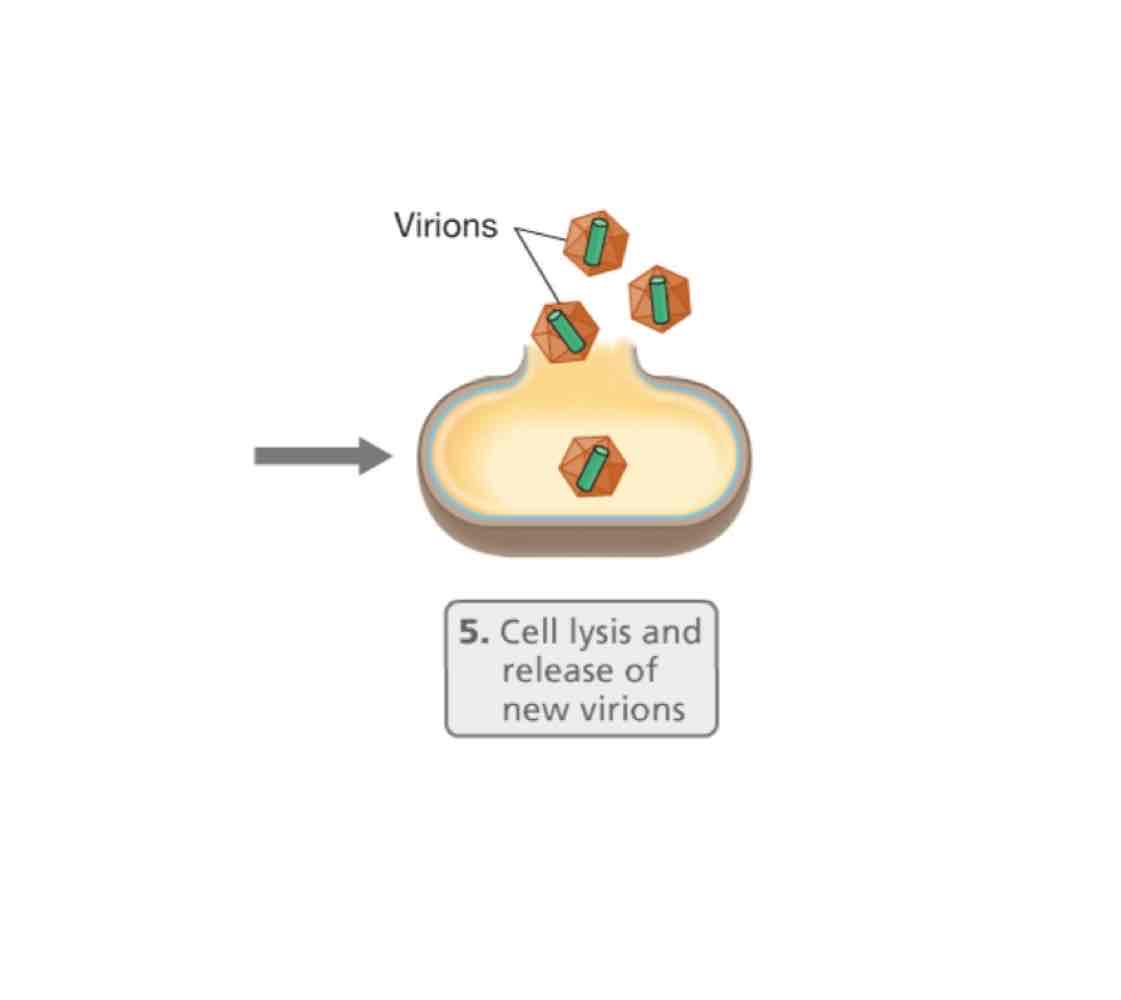
What’s the relationship between viral infection and infected host cells? Briefly explain why this works.
More viral infection if more host cells are infected, because the more host cells are infected, the more viruses are produced within each host cell, the more viruses can spread thereafter.
What is budding? Explain how it works.
A release of enveloped viruses, which starts by the insertion of viral proteins, the spikes, into host membrane, which tells the nucleocapsid where to bud through. Envelopment of nucleocapsids occur once budded through, and viral envelope, consisting of host lipids and inserted spikes, is now part of the new virion.
